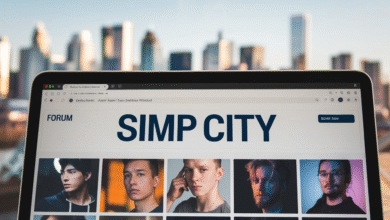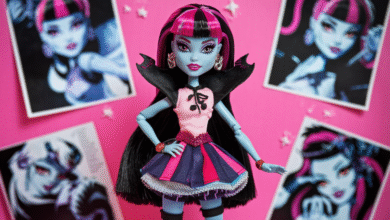How Anat Levin Hyper Laplacian Changed the Way We Clean and Sharpen Images

The anat levin hyper laplacian idea is super smart and helps make blurry or noisy photos look much better. This special method isn’t like the usual ways we clean pictures. It uses something called a “hyper Laplacian” that understands how real images should look. Anat Levin and her team made this trick to work better with edges and fine details in photos. This is helpful when you take pictures in bad light or when there’s too much noise from your camera. Regular filters can make edges messy or soft, but this method keeps the sharp lines clear. Even though it sounds fancy, it’s just a better way to make images clearer, sharper, and more real.
The cool part about the anat levin hyper laplacian is how it knows what parts of the picture should be soft and what parts should be sharp. It’s smart enough to not treat everything the same. For example, in a photo of a dog sitting in grass, it keeps the dog’s edges sharp, but it doesn’t over-fix the grass in the background. It does this using math that notices patterns in how pictures usually look. This is better than regular methods like Sobel or Laplacian filters that just look for edges. With this, we get clean and natural photos, not ones that look too fake or edited. That’s why a lot of people in computer vision and photo apps now love using this idea, especially in AI tools and new phone cameras. It’s a simple idea with big results.
What Is Anat Levin Hyper Laplacian and Why It’s a Big Deal in Image Fixing
Anat Levin hyper Laplacian is a smart way to clean pictures that look messy or blurry. It works by using a special math rule that helps tell what parts of a picture should be sharp and what should be soft. This is different from old filters that just try to find edges quickly. Anat Levin and her team made this new idea to help fix images in a better, smarter way. It looks at how real photos behave and uses that to guide how it fixes them. That’s why many people in computer vision and photo apps now use this trick. It helps pictures look more clear, more real, and not too sharp or fake. It’s a big step for making images better.
How Anat Levin Hyper Laplacian Helps Clean Up Noisy or Blurry Photos
When a photo looks noisy, it means little dots or specks are all over it. Sometimes, it also looks blurry and not clear. The Anat Levin hyper Laplacian method helps fix that. It finds out which parts of the picture should stay sharp and which parts need to be softer. It doesn’t fix everything the same way like old methods do. Instead, it learns from how real photos are supposed to look. This way, the photo looks more natural after fixing. The noise is removed without losing the good details. It’s helpful for photos taken in low light or with shaky hands. Many tools and apps now use this because it makes bad pictures look good again.
The Smart Math Behind Anat Levin’s Hyper Laplacian Trick
The cool thing about the Anat Levin hyper Laplacian trick is the math behind it. It uses something called a prior, which means it guesses how real images should look before making changes. This prior is not simple—it’s based on real photos and how they usually look. Anat Levin found that real photos have special patterns, and her math model follows these patterns. The model is called “hyper Laplacian” because it works better than the regular Laplacian used in edge filters. It keeps sharp parts sharp and soft parts soft. This smart math makes the image better without making it look too fake. That’s why it’s a favorite in research and tech now.
Comparing Anat Levin Hyper Laplacian to Regular Edge Filters
Old filters like Sobel and Laplacian are good at finding edges, but they don’t always make the whole image better. Sometimes they make it too sharp or miss tiny details. Anat Levin’s hyper Laplacian is different. It doesn’t just find edges. It looks at the whole picture and decides what needs to be clear and what needs to stay smooth. Regular filters treat all pixels the same, but this one is smarter. It makes the photo look clean but not weird. You get nice edges without extra noise. That’s why this method is now used more than old filters. It’s not just about sharpness—it’s about making the whole photo look right.
Why Phone Cameras and AI Tools Love the Anat Levin Hyper Laplacian Idea
Many phone cameras and AI photo apps use the Anat Levin hyper Laplacian idea now. That’s because it makes pictures look really good, even if the lighting is bad. It helps your face stay clear in selfies, even when the background is fuzzy. AI tools also use this trick because it helps the computer know where the edges are, without making them too sharp. This method is smart, fast, and makes photos look like what our eyes see. That’s why you see clearer pictures in new phones, apps, and even in online photo editors. It makes everything easy for users without needing them to know the science behind it.
Easy Way to Understand Hyper Laplacian in Real Photos
Think of a photo like a coloring book page. Some parts need strong lines, like where your face or hands are. Other parts, like the sky or soft background, don’t need sharp lines. The hyper Laplacian method helps keep the strong lines where they belong and keeps the soft parts smooth. It’s like a magic coloring trick that knows where to draw and where to shade. When you use this in real photos, the pictures look more real and nicer. You don’t get too many lines or too much blur. It just looks right. That’s why this method is now used in real-life apps and tools every day.
Can Kids Use the Anat Levin Hyper Laplacian Idea Too? A Fun Guide
Yes, even kids can try using the Anat Levin hyper Laplacian idea, especially if they like editing pictures. Some photo apps that use this idea are easy to play with. You don’t need to know big math words. You just upload a photo, click a button, and the app makes it look better. If you’re learning coding or want to play with filters, this method is a cool one to try. You’ll see how your picture becomes clearer without getting weird edges or fake looks. It’s a fun way to learn how smart tools help improve photos. Great for school projects, too!
Real Life Uses of Anat Levin Hyper Laplacian in Apps and Tools
This method isn’t just for scientists. It’s in apps you may already use! Apps like photo editors, video fixers, and even face filters use this to make things look better. It’s used in phones to make your camera smarter. It’s also in AI tools that clean up old videos or help find things in pictures. Even in doctors’ tools, this method helps clean up medical images. That way, they see things clearly. So, whether you are editing a birthday picture or fixing a school photo, chances are this idea is helping in the background. It makes everything look clean, nice, and real.
How Anat Levin’s Work Changed the World of Computer Vision
Before Anat Levin’s hyper Laplacian work, many filters would guess edges but mess up soft areas. Her method gave computers a smarter way to read images. Now, in computer vision, machines can understand what’s in a photo better. This helps robots, cars, and smart devices “see” like humans. Her research is used in self-driving cars, AI cameras, and even security systems. It taught the world that image filters need to be both soft and sharp in the right places. That small idea made a big change. Today, her work is in many tech things we use every day without even knowing it.
Simple Tips to Try Hyper Laplacian Filters in Your Own Photo Projects
If you want to try this at home, it’s easier than you think. Many online tools and photo apps now use this kind of smart filter. Just upload your photo, choose the smart filter or “denoise” option, and watch the magic. You don’t need to write code or understand the math. But if you like learning, you can find simple Python tutorials online to use it with code. Try using it on blurry pictures, or old ones with too much noise. You’ll see how they look more real and clear after. It’s fun, and you’ll learn something cool too!
Conclusion
So now you know that anat levin hyper laplacian is not just a big word. It’s a smart way to make photos clear and beautiful. It keeps the sharp things sharp and the soft things soft. It’s used in apps, phones, and many photo tools. Even if you’re not a scientist, you can still use it in fun ways.
This idea changed how we clean images forever. You don’t need to understand the deep math to use it. It just works, and it makes your pictures better. Try it out in your favorite photo app and see how much clearer your pictures can be. You’ll love the results.
FAQs
Q: What is anat levin hyper laplacian used for?
A: It’s used to clean up noisy or blurry photos and make them look sharp and natural.
Q: Can I use anat levin hyper laplacian in my phone?
A: Yes, many phone cameras and apps already use this method in the background.
Q: Is this filter better than regular edge filters?
A: Yes, it gives smarter results by keeping important edges and removing noise smoothly.
Q: Do I need to know coding to use it?
A: No, many easy tools and apps use it, so you can try it without coding.
Q: Who made this method?
A: It was created by Anat Levin and her team to improve how we fix and clean images.



